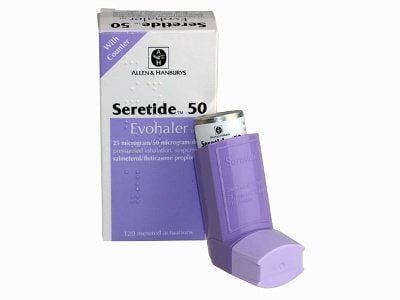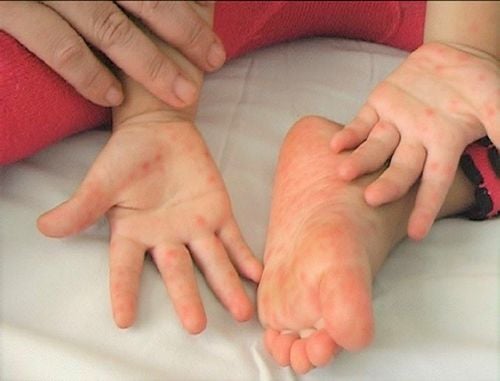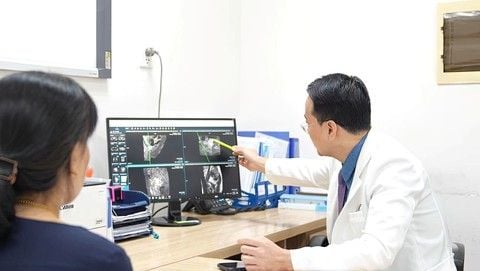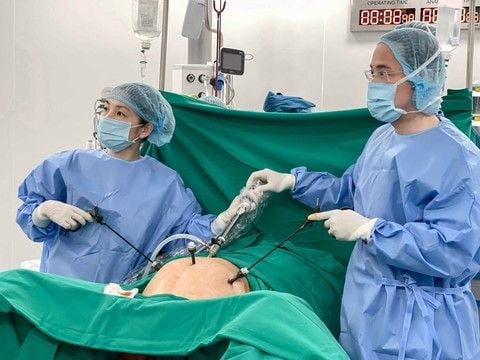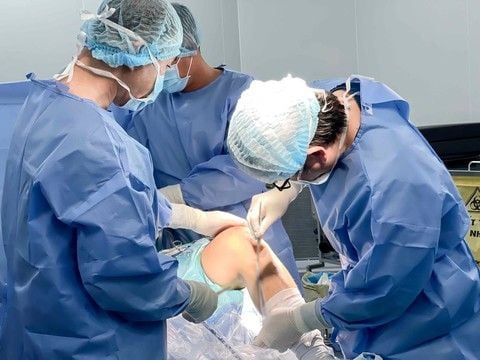1. What is Pleural Tuberculosis?
In addition to the lungs, tuberculosis bacteria can affect various other organs, such as the lymph nodes, pleura, digestive system, reproductive organs, and bones and joints. This is referred to as extrapulmonary tuberculosis. After the tuberculosis bacteria enter the body, they find a suitable location to reside, multiply, and develop, leading to the onset of tuberculosis either in the lungs or in other parts of the body. Extrapulmonary tuberculosis usually occurs when the bacteria spread through the bloodstream or lymphatic system to various organs.
Pleural tuberculosis is a type of extrapulmonary tuberculosis, ranking second after lymph node tuberculosis. The transmission of pleural tuberculosis may occur when the bacteria enter through the bloodstream or when pulmonary tuberculosis affects lung tissue and spreads to the pleura.
Pleural tuberculosis is commonly seen in younger individuals and is a leading cause of pleural effusion (fluid accumulation in the pleura).
2. Causes of Pleural Tuberculosis
Pleural tuberculosis is caused by microbial agents, most commonly the human tuberculosis bacteria. In rarer cases, bovine tuberculosis bacteria or atypical tuberculosis bacteria can also cause the disease. It can be transmitted from person to person through respiratory droplets when an infected person coughs or sneezes.
The risk factors that increase the likelihood of developing tuberculosis include:
- Individuals who have not received the childhood tuberculosis vaccination.
- People with late-diagnosed pulmonary tuberculosis who have not received proper treatment.
- Individuals with chest trauma, which makes it easier for bacteria to spread to the pleura.
- People exposed to sudden cold, which weakens the body’s defenses, making it more susceptible to the disease.
- Those with weakened immune systems, such as individuals living with HIV/AIDS, pregnant women, postpartum women, and the elderly.
3. Symptoms of Pleural Tuberculosis
Pleural tuberculosis typically develops in two stages: the onset phase and the full-blown phase:
3.1. Onset stage
- More than half of people with the disease experience high fever ranging from 39 to 40°C, accompanied by sudden chest pain that gradually worsens. They may also feel shortness of breath and have a dry cough.
- A smaller proportion of patients may experience mild evening fever, along with gradually increasing chest pain and shortness of breath over time.
- Some individuals may have very mild or no noticeable symptoms, making the condition difficult to detect. These individuals may only experience light chest discomfort or a dry cough.
3.2. Full-blown stage
In this stage, the patient will show symptoms such as fatigue, pale complexion, lack of vitality, unexplained sudden weight loss, high fever ranging from 39 to 40°C, low blood pressure, rapid pulse, nausea, and vomiting. Changing positions may lead to dry, coughing spells, chest pain, but without the clear symptoms seen in the initial stage.
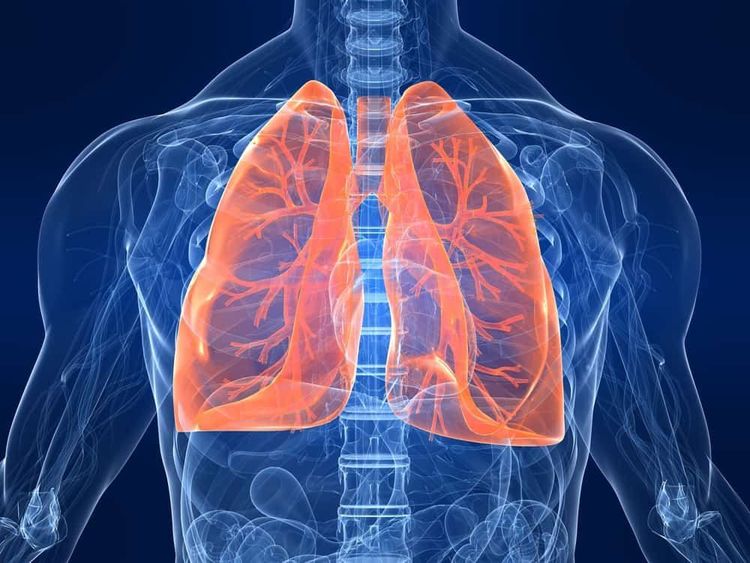
4. Is Pleural Tuberculosis contagious?
This is a common concern for many people, as they worry about the risk of spreading the infection to family members. If a person has pleural tuberculosis without concurrent pulmonary tuberculosis, there is no need to worry about transmission, as pleural tuberculosis cannot spread through the respiratory system like pulmonary tuberculosis. Research confirms that pleural tuberculosis, being a form of extrapulmonary tuberculosis, is not contagious through the airways.Therefore, if someone is diagnosed with isolated pleural tuberculosis, there is no risk of infecting others.
However, if pleural tuberculosis is associated with pulmonary tuberculosis, the infection can be transmitted through the respiratory system, as pulmonary tuberculosis is contagious. Additionally, individuals with this combined condition face a higher risk of severe complications, so proper treatment and infection control measures are essential to reduce the risk of dangerous complications.
5. Is Pleural Tuberculosis dangerous?
Pleural tuberculosis, if detected early, can usually be treated effectively with an appropriate tuberculosis treatment regimen. The condition typically progresses well and can be cured within a few weeks. However, the disease can cause several complications, such as pleuritis, pleural effusion (fluid buildup in the pleura), pneumothorax (air in the pleural cavity), pleural thickening and adhesions, and multi-pleural tuberculosis. These complications are more likely to occur in cases that are diagnosed late or in individuals with weakened immune systems.
Therefore, if you experience symptoms such as coughing, chest pain, or evening fever, it is important to seek medical attention promptly. Early detection and appropriate treatment are crucial to managing the disease effectively.
6. Treatment for Pleural Tuberculosis
Treatment for pleural tuberculosis involves several approaches, including:
- Antituberculosis Medication: This is the most important treatment, and it should be started early. It's essential to follow the doctor's instructions and complete the entire course of medication.
- Pleural Fluid Drainage: It is necessary to drain the pleural fluid promptly and thoroughly. To minimize complications such as shock, pneumothorax, secondary infection, and bleeding, the procedure should follow the principles of closed pleural drainage. Sterility must be maintained, and fluid should not be drained too rapidly or excessively.
- Prevention of Pleural Adhesion: Systemic medication, such as corticosteroids, should be administered from the beginning to reduce inflammation and minimize the risk of pleural thickening and adhesions.
- Surgical Intervention: If complications arise, such as pleural cavities, pleural thickening, or pleurocutaneous fistulas, surgical methods may be necessary in combination with other treatments.
- Breathing exercises can help restore lung function by improving ventilation and facilitating the faster absorption of pleural fluid.

7. Can Pleural Tuberculosis recur?
Pleural tuberculosis can recur if the treatment regimen is not followed correctly, if there is non-compliance with the treatment plan, or if treatment is stopped before the prescribed course is completed. Additionally, even after treatment, the patient can become re-infected with tuberculosis bacteria, potentially leading to pulmonary tuberculosis or extrapulmonary tuberculosis, such as pleural tuberculosis.
Therefore, to prevent recurrence, it is crucial to adhere strictly to the treatment plan and take proactive measures to prevent reinfection.
8. Preventing Pleural Tuberculosis
Prevention is an effective way to reduce the risk of contracting pleural tuberculosis and prevent its recurrence. Some preventive measures include:
- Limit exposure or use protective measures when in contact with individuals who have pulmonary tuberculosis, particularly high-risk groups such as healthcare workers and family members caring for severe pulmonary tuberculosis patients.
- Regularly wear masks and practice hand hygiene by disinfecting hands after contact with potential sources of infection, before eating.
- Avoid harmful habits like picking your nose, as it can indirectly introduce bacteria into the body through the respiratory system.
- Boosting the body's immune system is crucial to help defend against bacterial invasion. Enhancing physical health through a balanced and nutrient-rich diet, combined with regular physical exercise, will help you maintain a strong and resilient body to fight off disease-causing agents. Additionally, it's important to strike a balance between rest and work to avoid stress.
- For infants, it's crucial to ensure they receive the BCG tuberculosis vaccine early on.
Thus, pleural tuberculosis, on its own, is not contagious to individuals in contact with the patient. However, if combined with pulmonary tuberculosis, it can spread via the respiratory route to others. If you suspect you have pleural tuberculosis or show symptoms, it is important to seek medical attention early to receive treatment and reduce the risk of complications.
To arrange an appointment, please call HOTLINE or make your reservation directly HERE. You may also download the MyVinmec app to schedule appointments faster and manage your reservations more conveniently.


